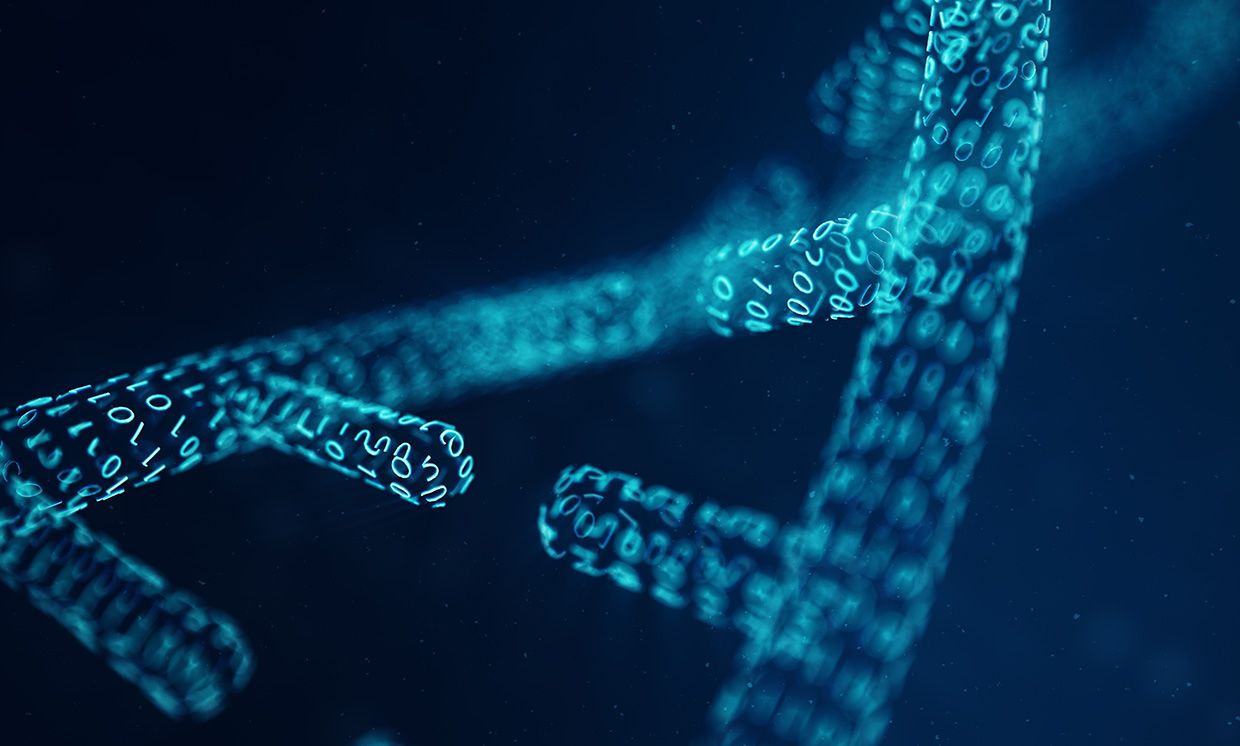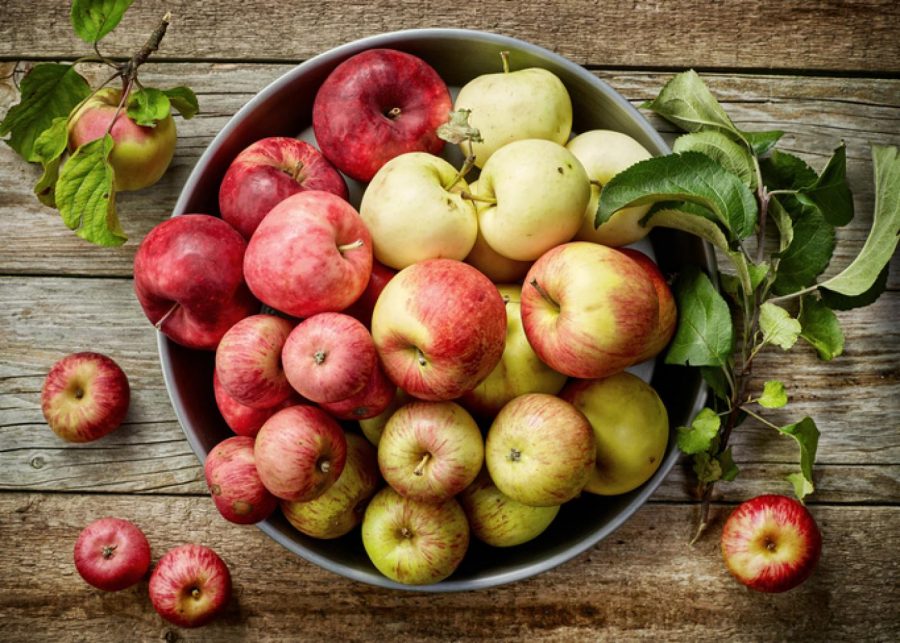GMOs, Friend or Foes pt.1
GMOs, or genetically modified organisms, have lately been seen as a frightful entity. Most commonly known in agriculture, humans are not sure if GMOs are in fact a reliable, or unnecessary, thing. To most, it has always been considered a harmful gadget. While GMOs used in medicine, like insulin, are highly accepted, when it comes to food, there is much question. If both involve the same mechanics in DNA, why is it seen so differently? Are GMOs really necessary for the making of agriculture? In this two part story, these question and more, solved for you today.
Humans changing traits in foods and animals has never been anything new. For thousands of years, humans have been breeding plants and animals to get desired traits. Breeders will select two parents of the same plant type that have beneficial traits to reproduce, yielding offspring with those desired traits.
 This is called selective breeding. Every vegetation you eat, like pears or corn, could have possibly come from generations of remodeling. In selective breeding, it takes ten, hundreds, or even a thousand of years to get the wanted features of the organism. It’s all based in luck. GMOs, on the other hand, remove all that waiting. We can choose the traits we want like making food bigger, changing its color, or even making the food resistant to diseases, all with a 100% guarantee. But GMOs can do much more than simply just making food bigger. So, how does GMOs work?
This is called selective breeding. Every vegetation you eat, like pears or corn, could have possibly come from generations of remodeling. In selective breeding, it takes ten, hundreds, or even a thousand of years to get the wanted features of the organism. It’s all based in luck. GMOs, on the other hand, remove all that waiting. We can choose the traits we want like making food bigger, changing its color, or even making the food resistant to diseases, all with a 100% guarantee. But GMOs can do much more than simply just making food bigger. So, how does GMOs work?
What genetically modified organisms do is in the name. An organism’s genetic material, most commonly a plant, has been changed or manipulated in a lab to produce a trait that is not formally from its own nature. The first step is to find what kind of gene you would like and to look if this gene exists in organisms, most commonly found in bacteria and viruses. Once it’s found, scientists take samples of the gene of interest and take it through a process that separates the DNA from the other parts of the cell and isolates the gene that you wish to remove. Next, they will commonly place it into a “gene gun”, but after that, there are many way to place the desired gene into the organism. One method is recombination. A man named Adam Postovit, who dedicates much of his life into GMO research, explains this technique.
“The desired gene is inserted into a plasmid (bacterial DNA). The Agrobacterium then infects the host plant and inserts its DNA into the plant (this is called horizontal gene transfer which follows a subset of processes)… scientists are using a natural process of gene transfer, and that there have been GMO’s for millions of years,” he said.
 They send thousands of DNA into thousands of cells. Once it’s in, the organism’s body will follow the instructions from the new gene like it was never changed. These instructions are mainly aimed at the organism’s proteins, which are responsible for the making of cells, protection of the body, and everything in between. And since it’s inside forever, the gene will be passed down generation by generation. An example of this would be apples. In Canada in 2015 in a Canadian biotech company, apples were engineered to maintain their color and not turn brown even if it’s sliced. Another is squash. Squash are vulnerable to many diseases, but with the help of GMOs, they are resistant to almost 6 types of viruses. But what are the better reasons to use GMOs?
They send thousands of DNA into thousands of cells. Once it’s in, the organism’s body will follow the instructions from the new gene like it was never changed. These instructions are mainly aimed at the organism’s proteins, which are responsible for the making of cells, protection of the body, and everything in between. And since it’s inside forever, the gene will be passed down generation by generation. An example of this would be apples. In Canada in 2015 in a Canadian biotech company, apples were engineered to maintain their color and not turn brown even if it’s sliced. Another is squash. Squash are vulnerable to many diseases, but with the help of GMOs, they are resistant to almost 6 types of viruses. But what are the better reasons to use GMOs?
The main reason we use GMOs is, as mentioned before, agriculture. To start, farmers have always had struggles against pests that commonly destroy their crops. Because of this, farmers had no choice but to heavily rely on the use of pesticides. However, pesticides are expensive, require much labor in developing countries, make farmers very ill, and if not treated carefully, the toxins can escape from areas of plantation and can affect the environment, like contaminating soil or water. It can also be very ineffective, since pests can adapt or have a mutation that protects them from the poison. GMOs can change that.
 Scientists have added a gene to most agriculture (like corn, papayas, and more) that can and have improved in the removal of many pests. But how do GMOs help with this issue? The genetically modified plant produces a protein that disrupts the digestion system of a specific pest when eaten. The plant makes its own pesticide. The pests that eat it die. GMOs are very useful to farmer’s work, health, and not causing harm to the environment when using this specific method.
Scientists have added a gene to most agriculture (like corn, papayas, and more) that can and have improved in the removal of many pests. But how do GMOs help with this issue? The genetically modified plant produces a protein that disrupts the digestion system of a specific pest when eaten. The plant makes its own pesticide. The pests that eat it die. GMOs are very useful to farmer’s work, health, and not causing harm to the environment when using this specific method.
An example of this are eggplants. Bangladesh uses eggplants more than any other country, and in order to maintain their eggplants, they had to highly rely on insecticide. That changed when a new engineered eggplant came into the country. This “new eggplant” has the same pest killing DNA and was much more effective than using the pesticide. This dropped insecticide use by more than 80%, and farmers’ income was much higher.
But if the vegetation has a protein that can negatively affect the health in pests, doesn’t it also affect the digestive system in humans? Actually, it’s nothing to worry about. The gene is made to specifically kill the pest’s digestion. And since our body can easily break down these proteins without sweat, it’s completely harmless to us. Take chocolate for example. Chocolate is poisonous to dogs, but a delight for humans to eat. But many are still concerned if GMOs are really safe. What should scientist do before selling this kind of technology? Should GMOs be trusted? Let’s stop here, and we will bring you this and more, in GMOs, Friend or Foe pt.2
The reason I joined is that I enjoy typing/writing stories and I knew that in journalism, you do that alot, but never was able to do journalism class in...











Barbara Williams • Oct 7, 2020 at 8:58 am
I liked your article Juan, but I like to believe that GMOs are Government Mutated Organisms.